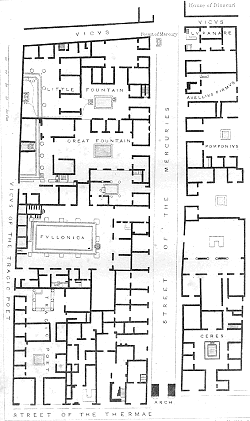Plate LX - Street of the Mercuries

Back to chapter 10 / Back to chapter 12 |
The plan of the Street of Mercury, or rather of the
Street of the Mercuries, from the many figures of that
deity represented in it, forms the principal feature of
the plan Plate LX. The object, in giving it of this
size, was that of showing all the new discoveries in
sufficient detail, without giving a separate plate for
each subject. |